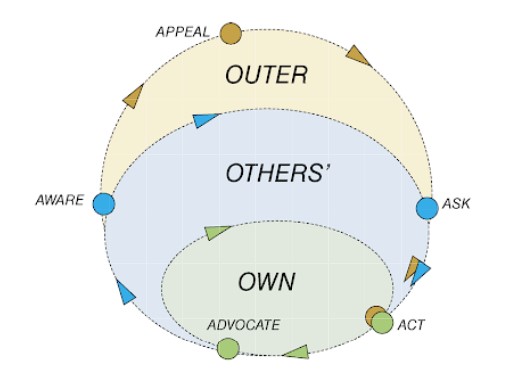Last week I shared with you the first part of the Marketing 4.0 book. In the second part, which is the main one, the authors talk about a new Customer Path in the digital age and a new set of marketing metrics. One of the characteristics of the modern world is speed. People do not have enough time for a detailed study of products and services. At the same time, a huge amount of information falls on the consumer.
Therefore, the previous approach in marketing, which is based on a large number of touchpoints with the consumer and the use of bright advertising messages, is not so effective. The authors talk about a new approach that. It is based on a small number of memorable advertising messages in a few thoughtful touchpoints.
One of the earliest and most widely used structures to describe the customer path is AIDA: attention, interest, desire, and action. Elmo Lewis invented this model. AIDA has also undergone several extensions and modifications.
Derek Rucker proposes a modification of AIDA, which he called the 4-A theory: aware, attitude, act and act again. In this latter context, the stages of interest and desire are simplified to a relationship and a new stage appears-act again. This framework is designed to track customer behavior after purchase and measure customer loyalty.
The customer path in the era of connectivity must be rewritten. From 4-A to a five-member structure: awareness, appeal, ask, act, advocate.

From aware to advocate: a theory of influence
The final goal of Marketing 4.0 is to move clients from the awareness stage to the advocacy stage. The authors describe an influential theory that can help marketers achieve this goal. All decisions that the consumer makes at the stages of the customer path are usually based on three types of influence.
- External influence comes from external sources – outer. The effect of the brand through advertising and other marketing communications. This kind of influence can still be controlled.
- The influence of other people also comes from the external environment – other. The impact comes through a close circle of friends and family who are part of word of mouth. Despite the efforts of brands, it is very difficult to control and manage the influence of others. A possible option is community marketing (promoting brand discussion through loyal consumers).
- Personal experience – own. Influence based on personal evaluation and personal preferences of the consumer. Usually outer and others have an impact on your own choice.

It must be remembered that the consumer is subject to all three types of influence at the same time, only in different proportions.
Purchase action ratio (PAR) and brand advocacy ratio (BAR)
Marketers need to harness the power of human-centric marketing even more. In accordance with 4-A, the authors introduce two new marketing measures into the five-member structure: the purchase action ratio – PAR and the brand advocacy ratio – BAR.
The PAR ratio measures how companies convert brand awareness into purchases, that is, the conversion rate from aware to act. You can calculate PAR as the number or percentage of people in the market who purchase a brand.
The BAR ratio measures how companies turn brand awareness into advocacy, that is, the conversion rate from aware to advocate. You can calculate BAR as the number or percentage of people in the market who constantly recommend a brand to other people.
According to the authors, PAR and BAR are the best measurements for return on marketing investment (ROMI).
Read more about Marketing 4.0 next week.




